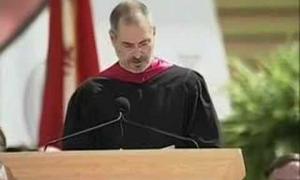Book Review: A Feast of Speeches
May 08, 2020
Review of "Transatlantic Rhetoric—Speeches from the American Revolution to the Suffragettes"
Review of: Transatlantic Rhetoric – Speeches from the American Revolution to the Suffragettes by Tom Wright
For more than 10 years, Tom Wright of the University of Sussex has concentrated his scholarly energies on “reading, teaching and thinking about the spoken words of the past.” He has taken a close interest in the role of speeches in channeling public opinion during major societal debates of the late 18th, 19th and early 20th centuries on both sides of the Atlantic Ocean – covering everything from slavery, women’s suffrage, agnosticism, nativism and pacifism to socialism, agrarian populism, anarchism and the emergence of various forms of nationalism.
Wright’s new book, Transatlantic Rhetoric, reflects this focus by bringing together key excerpts of more than 70 speeches delivered over an approximately 140 year period (1774 – 1908), accompanied by crisp, detailed descriptions of each speech’s historical context. And for those who wish to review the full text of a particular speech, he includes helpful reference notes on where to look. The variety of source material alone covered in Transatlantic Rhetoric is in itself a strong contribution by Wright to the ongoing effort to move speech anthologies beyond the “History’s Greatest Speeches, Delivered by Our Greatest Men” approach that has often prevailed over the last couple of centuries. You’ll find at least one or two such volumes in almost every used bookstore, with their contents anchored in addresses that originated from the pulpit, a seat in a legislature, parliament or courtroom, during a council of war or on a battlefield.
As Wright has noted, a more inclusive approach that, for example, incorporates speeches made from “street corners,” or by speakers exhorting listeners gathered in “muddy fields,” can help to widen our understanding of how partisans of all kinds of causes used public “deliberation, testimony and advocacy” to build mass support. Speeches delivered outside “grand formal venues” have as much to teach us as those delivered inside such places.
In addition to the schools of thought mentioned above, it’s hard to find an “-ism” that isn’t represented in Wright’s book – and that includes a speech by Benjamin Disraeli defending feudalism, plus anti-imperialist speeches by Mark Twain and British political writer John Bright. Wright thus provides readers with a panoramic view of how rhetoric, which he describes as a kind of “open source software,” was harnessed by speakers on behalf of various causes during the time period he has selected.
In recalling the days when audiences assembled for rousing, live, face-to-face addresses delivered by speakers on issues of wide concern, Wright has an objective beyond indulging in warm nostalgia for when speeches ideally involved “large rallies” and “mass meetings.” He writes: “[I]n an era in which a culture of digital video sharing has brought extended oral communication back to the fore, the public language preserved [through old speeches] offers more than just resources for college or classroom but a way of understanding the enduring currency of spoken ideas.”
Speakers of the 19th century might well be dazzled by what technology permits us to do in 2020 when we disseminate videos of speeches via the Internet to a potentially global audience. However, as Wright’s introduction makes clear, those same individuals had themselves seen dramatic jumps in terms of how speeches could be shared with wider audiences, compared to previous years. Wright reminds us about how, as printing techniques became cheaper and more efficient, speakers and their sympathizers could circulate speeches beyond the people within the sound of their voices through pamphlets and, later, excerpts (or complete texts) reprinted in large-circulation newspapers.
Another goal of Wright through this book is to place readers in a position where they can examine for themselves what he calls the “interlinking” of ideas, phrases and “natural imagery” among the speeches he presents. This includes when speakers for vastly different causes used terms like “liberty” in their remarks, each having a particular interpretation of that word in mind. These linkages help show, as the book’s title suggests, that we can in the speeches find evidence of a distinct transatlantic “sphere” of different reactions to and views of shared concepts. (For additional insightful scholarship from Wright on what we can learn from studying old speeches, readers can explore his 2015 essay entitled “Making Anglo-American Oratory Resonate.”)
Wright does not venture into much speculation regarding what makes an effective speech. Prompted by his desire to explore the value of the study of old speeches, this review will close with some apropos thoughts penned more than 100 years ago, by a man of letters who shared Wright’s interest in yesterday’s oratory. The following was written by essayist and poet Thomas Michael Kettle as part of his introduction to an anthology of noteworthy Irish speeches. As a response to a self-posed question – “How am I to set about making a good speech?” – Kettle suggested:
To be equal to the occasion, equal in the action counselled, in the reasons expounded, in the passions aroused; to be neither above your work nor below it, but to strike at its centre with strong precision, is to be an initiate.





I look forward to purchasing the book, ‘Tranatlantic Rhetoric’ online once the lockdown is lifted and courier services are functional.